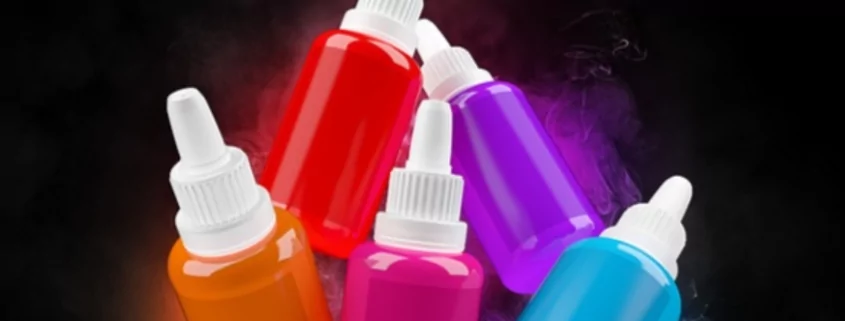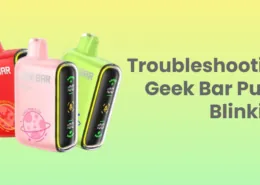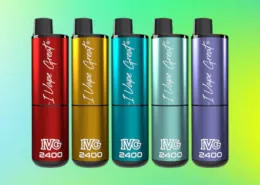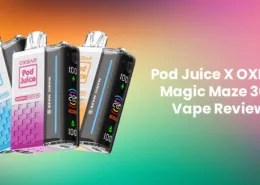A Comprehensive Handbook of Vape Juice with Nicotine
Welcome to the ultimate guide on vape juice with nicotine! Whether you’re new to vaping or a seasoned vaper, this handbook will provide you with valuable information on the different types of vape juice with nicotine, how to choose the right nicotine strength, and even how to mix your own vape juice. Let’s dive right in!
What is Vape Juice?
Vape juice, also known as e-liquid or vape liquid, is the fluid used in electronic cigarettes and vaporizers to produce vapor. It typically contains a mixture of propylene glycol (PG), vegetable glycerin (VG), flavorings, and nicotine.
Ingredients of Vape Juice
- Propylene Glycol (PG): A colorless, odorless liquid used as a base for vape juice. It provides a strong throat hit and carries the flavor well.
- Vegetable Glycerin (VG): A thick, sweet, and viscous liquid also used as a base for vape juice. It creates large vapor clouds and gives a smoother throat hit.
- Flavorings: Food-grade flavorings are added to create a wide variety of flavors in vape juices.
- Nicotine: An optional ingredient in vape juice, which can be adjusted to the user’s preference.
Why Use Nicotine in Vape Juice?
Many people use vaping as an alternative to smoking traditional cigarettes. Nicotine in vape juice allows users to satisfy their nicotine cravings without the harmful chemicals and tar present in tobacco smoke. Moreover, vape juices with nicotine come in various strengths, allowing vapers to gradually reduce their nicotine intake if they wish to quit or minimize their dependency on nicotine.
Read more: What is ejuice
Different Types of Vape Juice with Nicotine
Nicotine is a natural stimulant found in the tobacco plant. In vape juice, it is available in various forms and concentrations, allowing vapers to customize their vaping experience. The two most common forms of nicotine found in vape juice are freebase nicotine and nicotine salts.
Freebase Nicotine
Freebase nicotine is the most common type of nicotine used in vape juices. It’s a purified form of nicotine that provides a strong throat hit and quick absorption into the bloodstream. However, it may not be suitable for high-strength vaping, as it can be quite harsh on the throat.
Nicotine Salts
Nicotine salts are a newer type of nicotine that’s more similar to the natural state of nicotine found in tobacco leaves. They provide a smoother throat hit and higher nicotine concentration, making them ideal for those who require higher nicotine levels or prefer a milder vaping experience.
Hybrid Nicotine
Hybrid nicotine is a combination of freebase nicotine and nicotine salts. It provides a balance between a strong throat hit and a smooth vaping experience.
Choosing the Right Nicotine Strength
Selecting the proper nicotine strength is essential to ensure a satisfying vaping experience. Here are some general guidelines to help you choose the right strength:
Light Smoker or Beginner Vaper
If you’re a light smoker who smoke less than half a pack per day or just starting your vaping journey, it’s best to start with a lower nicotine strength, such as 3-6 mg/mL. This will provide a milder throat hit and help you ease into vaping.
Regular Smoker or Intermediate Vaper
Moderate smokers who consume half a pack to a full pack of cigarettes daily or intermediate vapers might prefer a medium nicotine strength, ranging from 9-12 mg/mL. This level provides a satisfying throat hit without being too harsh or overwhelming.
Heavy Smoker or Advanced Vaper
Heavy smokers who consume more than a pack of cigarettes per day or advanced vapers who require a stronger nicotine hit should opt for higher nicotine strengths, such as 18-24 mg/mL. This level of nicotine can provide the satisfaction they’re looking for while still maintaining a smooth vaping experience.
Very High Nicotine (36-50 mg/mL)
Very high nicotine strengths are typically found in nicotine salt formulations and are suitable for heavy smokers or those using low-power pod systems.
Vape Juice Flavors
Vape juices come in a wide variety of flavors to suit every palate. From fruity and sweet to rich and complex tobacco flavors, there’s something for everyone. Experimenting with different flavors can enhance your vaping experience and help you find your perfect match.
- Tobacco: Tobacco-flavored vape juices are designed to mimic the taste of traditional cigarettes, providing a familiar experience for transitioning smokers.
- Menthol: Menthol flavors offer a cooling sensation, reminiscent of menthol cigarettes or minty gum.
- Fruits: Fruit-flavored vape juices are popular for their refreshing and natural taste profiles, ranging from sweet to tart.
- Desserts: Dessert-flavored vape juices provide rich and indulgent flavors, such as custards, cakes, and pastries.
- Beverages: Beverage-flavored vape juices capture the essence of popular drinks, including coffee, tea, and cocktails.
Selecting a VG/PG Ratio for Your Vape Juice
The VG/PG ratio in vape juice affects the vapor production, throat hit, and flavor intensity. Here are the common VG/PG ratios and their characteristics:
- High VG (70/30 or 80/20): High VG vape juices produce dense clouds of vapor, making them ideal for cloud chasers and sub-ohm vaping. They offer a smoother throat hit and are typically sweeter in taste.
- Balanced VG/PG (50/50): A balanced VG/PG ratio provides a mix of flavor intensity and vapor production, suitable for various vaping styles and devices.
- High PG (30/70 or 20/80): High PG vape juices deliver a stronger throat hit and more pronounced flavors, making them ideal for mouth-to-lung (MTL) vaping and low-power devices.
Read more: What is PG and VG
Proper Storage and Handling of Vape Juice
Proper storage and handling of vape juice can significantly impact its quality and shelf life. Follow these tips to ensure your vape juice stays fresh and safe:
- Store in a Cool, Dark Place: Exposure to heat, sunlight, and air can degrade the quality of your vape juice, resulting in reduced flavor and nicotine potency. Keep your vape juice bottles in a cool, dark place, such as a cupboard or drawer.
- Shake Well Before Use: Nicotine and flavorings can settle over time, leading to an uneven distribution of ingredients. Shake your vape juice bottle well before use to ensure a consistent vaping experience.
- Use Child-Resistant Bottles: Nicotine is a toxic substance and should be kept out of reach of children and pets. Use child-resistant bottles and store them securely to prevent accidental ingestion.
- Check Expiration Dates: Vape juice typically has a shelf life of one to two years. Check the expiration date on the bottle and discard any expired product.
How to Mix Your Own Vape Juice
Tools and Supplies
- Propylene Glycol (PG)
- Vegetable Glycerin (VG)
- Nicotine (freebase or salts)
- Flavorings
- Graduated cylinders or syringes for measuring
- Mixing containers
- Gloves and safety goggles
Mixing Steps
- Calculate the desired PG/VG ratio, nicotine strength, and flavor percentages.
- Measure out the required amounts of PG, VG, nicotine, and flavorings using graduated cylinders or syringes.
- Pour the ingredients into the mixing container and mix thoroughly.
- Transfer the mixture into a vape juice bottle and seal it tightly.
- Steep the vape juice for a few days to a few weeks, depending on the flavors used, to allow the ingredients to blend and develop.
Read more: How to steep your ejuice
Understanding the Risks and Benefits of Vaping with Nicotine
Vaping with nicotine comes with its risks and benefits. It is essential to weigh the pros and cons before deciding to use vape juice with nicotine:
- Benefits: Vaping with nicotine can help smokers transition from traditional cigarettes to a less harmful alternative. It can also provide a customizable experience, allowing users to control their nicotine intake and choose from a variety of flavors.
- Risks: Nicotine is an addictive substance, and its use can lead to dependency. Additionally, vaping with nicotine may have potential health risks, including increased heart rate, blood pressure, and respiratory issues.
It is crucial to consult with a healthcare professional before starting or continuing to use vape juice with nicotine, especially if you have any pre-existing health conditions.
Vape Juice Safety Tips
- Keep vape juice away from children and pets.
- Wear gloves and safety goggles when mixing your own vape juice to prevent skin contact and accidental spills.
- Dispose of empty vape juice bottles and used supplies responsibly.
- If you experience any adverse reactions while vaping, such as dizziness, nausea, or irritation, discontinue use and consult a medical professional.
In conclusion, vape juice with nicotine is a popular choice for many vapers seeking an alternative to smoking or looking to satisfy their nicotine cravings. Understanding the different types of vape juice with nicotine, how to choose the right nicotine strength, and the variety of flavors available can greatly enhance your vaping experience. And remember, safety first – always follow proper storage and handling guidelines, and never hesitate to ask for help or advice from fellow vapers or experts in the field.
Frequently Asked Questions
How long does vape juice last?
Vape juice typically has a shelf life of 1-2 years, but this can vary depending on the ingredients and storage conditions.
Can I vape without nicotine?
Yes, you can vape without nicotine. Many vape juices are available in nicotine-free options, allowing you to enjoy the flavors and experience of vaping without any nicotine intake.
What is the best PG/VG ratio for vape juice?
The ideal PG/VG ratio depends on personal preference and your vaping device. A higher PG ratio offers a stronger throat hit and more pronounced flavor, while a higher VG ratio produces more vapor and a smoother throat hit. A common starting point is a 50/50 PG/VG ratio, but you can adjust it to find the balance that works best for you.
Is it safe to mix my own vape juice?
Mixing your own vape juice can be safe if you follow proper safety guidelines, use high-quality ingredients, and take the necessary precautions. Always wear gloves and safety goggles, work in a well-ventilated area, and make sure to research and calculate your recipes correctly.
How do I know if my vape juice has gone bad?
Expired or spoiled vape juice may change color, develop an off smell, or have a strange taste. If you notice any of these signs, it’s best to dispose of the vape juice and replace it with a fresh bottle.
- Is Vaping While Driving Illegal in New Mexico? - June 28, 2025
- Vaping Laws in New Mexico: Guide of Age, Flavors, Tax & Rules - June 28, 2025
- Vaping Laws in New Hampshire: A Comprehensive Guide for You - June 27, 2025









